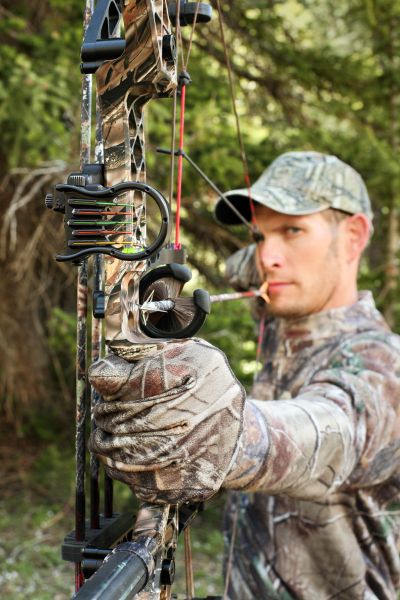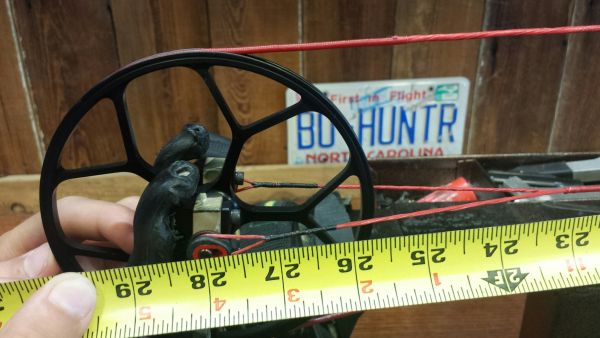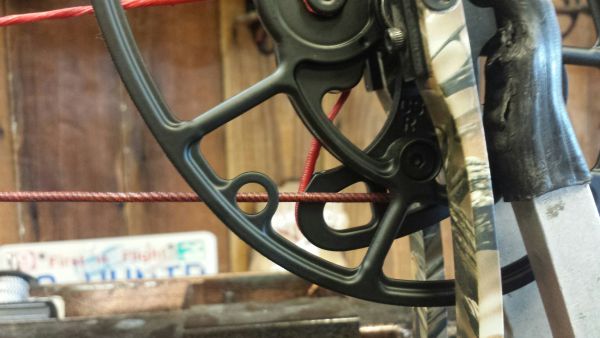
Be ready when archery season opens
That first cool front is (hopefully) on its way south — the first sign that fall is fast approaching. When the scalding summer temperatures are broken, it’s a bet you’ll start thinking about where best to ambush that deer you’ve been watching all summer on trail cams.
And in some parts of the state, bow season opens in a matter of days. If you haven’t pulled your bow out of the closet, you need to get in gear and ensure you’re ready to draw on that nice 8-point when it steps out.
Here are some steps Louisiana Outdoors’ Brad Ripp suggests as you prep for the bow-season opener:
1) Safety first
Give your gear a good once over, or even take it to your local archery pro shop and ask for a good inspection and recommendations.
“One of the most catastrophic findings would be to find cracked or splintered limbs,” Ripp said. “Inspect them well. Look for stress lines or cracks. For solid-limb bows, look especially good where the limb forks toward the cams and around where the axle holes are drilled.
“Carefully slide your hand along all surfaces of the limbs while feeling for small splinters. These would be a sign for potential failure. Sometimes it might be just a flaw in the paint or finish; if you’re unsure, have an expert look it over.”
2) Performance
Most manufacturers recommend a string be changed every three years or so.
“Of course, a string can last much longer — and if you keep it waxed regularly, it’ll certainly prolong the life and performance of your string,” Ripp explained. “Not only does the wax protect the material from the elements, but it also adds a lubrication to the strands that are rubbing against one another during shooting.
“But appearance isn’t everything, there’s another factor that can be good reason to change a string.”
Ripp said string stretch is inevitable, introducing variances from a bow’s original specifications.
“One indication (of string stretch) is to measure the axle-to-axle length and compare it to the manufacturer’s specs,” he said. “If it’s lost a little, this indicates string stretch.”

The impact of these changes can effect changes in downrange performance.
“I recently tested a bow before and after a string change, and found an increase of 7 feet per second with the new string,” Ripp said.
Timing also can be thrown off as a string stretches.
“This happens when the length of the string or cable(s) are out of tune with each other,” he explained. “Although this is more detrimental with double-cam bows, single-cam bows can also be affected by this.
“Single cam bows must be timed so the cam is in the correct starting position.”

3) Accessories
Ripp said the two most-important accessories on any bow are the sights and arrow rest.
“For these, I like to take a look at them from two angles: noise and function,” he said. “Some people may find that their bow is making more noise than they would like. In some cases, it’s not the bow; it’s the accessories.
“I like to hold my bow at the grip firmly and hit the riser somewhat harshly with (the soft part of) my fist. You can hear if you have some undesirable noise coming from parts that may be loose or even just noisy by design.
If you use a drop-away rest, which provide clean release of arrows, Ripp said you might want to add an accessory to keep the arrow under control in hunting situations.
“Some sort of ‘capture’ rest can save the day when your heart is pounding hard and it saves your arrow from falling off the rest in the heat of battle,” he said.
Inspecting the fibers of any illuminated sights also is important.
“If (the fiber is) broken it will not transmit light nearly as well and will not maintain its brightness,” Ripp said. “Is it bright enough? Many sights today have at least 5 or 6 inches of fiber for each pin, helping them to gather more light.”
And, lastly, he recommended ensuring you have the right peep sight for hunting — which isn’t necessarily the one you’d choose when shooting targets.
“Some people like a smaller peep for pinpoint accuracy, but in a hunting situation, a 3/16- or ¼-inch (peep) is a good compromise allowing adequate visibility,” Ripp said. “A smaller aperture allows far less light (to pass through) and can turn a low-light shot at your trophy into a view of a dark shadow.”


